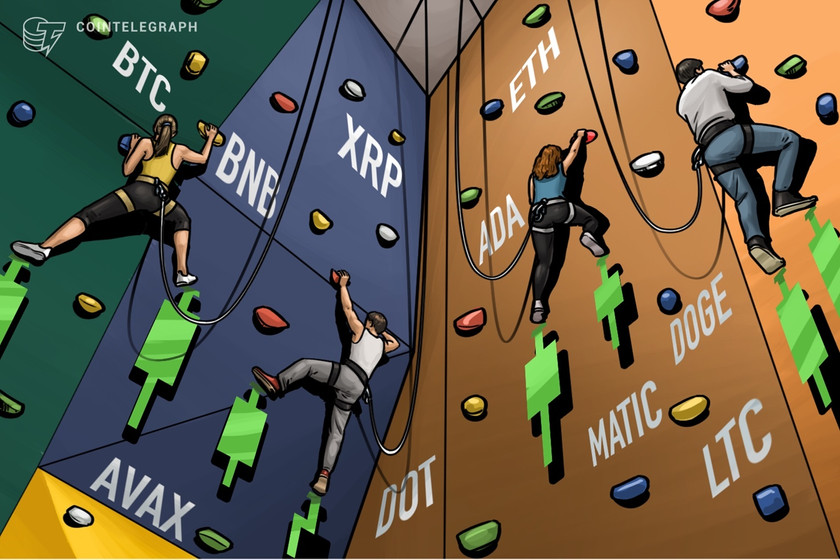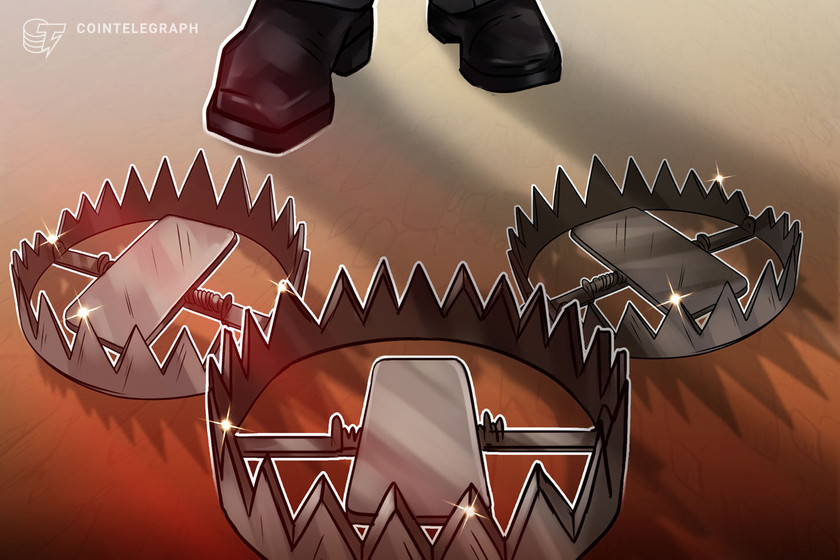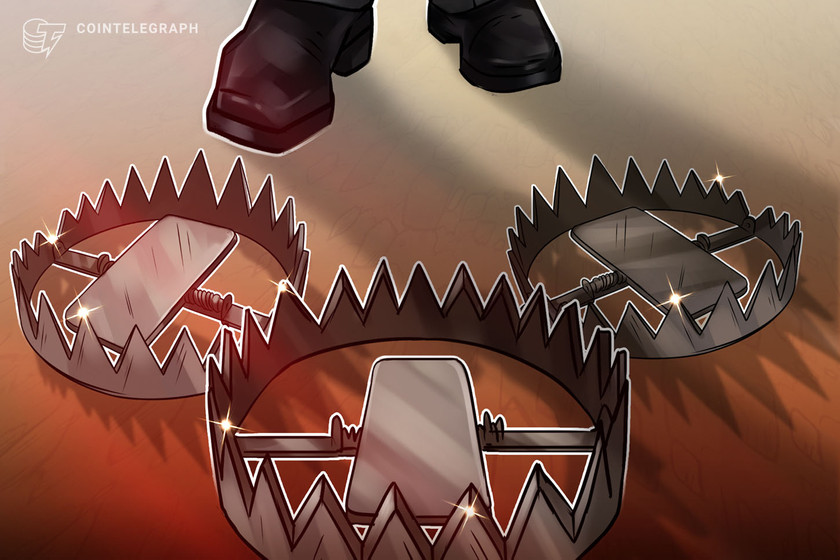Inside the World Economic Forum: Circle, Ripple reflect on Davos 2023


A handful of cryptocurrency industry players who took part in workshops at the World Economic Forum Annual Meeting paint a picture of increased collaboration within the space in 2023.
Key figures from the wider cryptocurrency space painted a picture of increased dialogue and collaboration at the World Economic Forum Annual Meeting in Davos.
Cryptocurrencies and blockchain technology remained but a small part of the projects and initiatives discussed and workshopped at the annual WEF conference high in the Swiss Alps. However, an increased number of sessions focused on the sector suggests that the wider world is looking for synergies between traditional finance and decentralized finance.
This theme emerged from a number of interviews conducted by Cointelegraph during January’s conference in Davos. Senior executives from XRP issuer Ripple and USD Coin (USDC) stablecoin firm Circle highlighted the importance of embracing solutions and systems that are creating tangible utility and value.
Circle and Ripple had a bird’s eye view of the wider crypto and blockchain conversation in Davos, given their participation outside the WEF conference at a myriad of crypto-focused events like Blockchain Hub Davos and GBBC’s Blockchain Central.
More than a Ripple
Ripple’s team rented out office space in Davos to conduct meetings and business during the WEF conference. Cointelegraph met Ripple’s APAC managing director, Brooks Entwistle, inside their Davos hub to discuss the firm’s involvement at this year’s conference.
Entwistle painted an interesting picture as an individual who has been to past WEF Annual Meetings in different roles for different companies and organizations from as early as 2009. The presence of crypto and blockchain industry participants has come to the fore in recent years, as Entwistle explained:
“What you notice over time is the crowd changes, the promenade changes and, certainly with crypto over the past few years, that has been the case. In May [2022], you could not walk down the promenade without being offered a Bitcoin pizza.”
However, the prolonged downturn across conventional and cryptocurrency markets, coupled with seismic events like the collapse of FTX late last year, has made a noticeable mark on the number of crypto ecosystem participants that set up shop at the conference in 2023.
The Managing Director of @Ripple, @BrooksEntwistle, took a moment to speak to our reporter @gazza_jenks about what’s to come for the company and $XRP in 2023.#CTWEF23 #davos2023 pic.twitter.com/kxmLMIxz03
— Cointelegraph (@Cointelegraph) January 20, 2023
The likes of FTX, who had a stall at the conference last year, were nowhere to be seen. Instead, blockchain infrastructure providers like Filecoin and Hedera had a notable presence, alongside the likes of Circle. Other firms maintained a presence outside the conference at their own event, like CV Labs’ Blockchain Hub and, at Davos’ Hotel Europe, GBBC’s Blockchain Central.
Related: TradFi and DeFi come together — Davos 2023
But Entwistle drew a silver lining around the decreased number of crypto stalls along the promenade, suggesting that more fruitful dialogue has been possible at the WEF conference:
“It’s definitely more muted now, but we’re actually having a really good WEF. With some of the noise and hype gone, the conversations and ability to go deep present more of an opportunity.”
Ripple’s APAC head highlighted his belief that progress was being made in terms of dialogue and understanding of crypto given that the number of panels within the event had increased from two sessions in 2022 to seven in 2023, stating:
“If you think about the two parallel tracks, the industry pushing the agenda outside on the street, around Davos and around the region and then what’s going on inside. That infiltration over time, why it’s important, why regulators and banks need to talk about it, and why it should be a broader topic than just what’s happening at a night cap here or a panel there along the promenade.”
Whether there should be more representation from the crypto and blockchain ecosystem inside WEF is a more complex question to consider. Entwistle believes topics with a broad reach outside of the crypto ecosystem need wider representation with projects, protocols and tools that offer value and insights into vexing global issues. He added:
“You need all those different forms represented, but I also think we have to use those slots wisely, use the panels wisely when you do get in front of this group and make sure that people understand real-world utility.”
Entwistle said the “general thrust” of crypto conversations inside the WEF Annual Meeting was focused on why the industry exists and what it’s building. For Ripple, that has been cross-border payments and liquidity provision. Other crypto proponents have been driving conversations around blockchain-based CBDCs and carbon credit initiatives.
While a more specific discourse took place at the WEF Annual Meeting, conversations and business between TradFi and DeFi flowed freely along the Davos promenade. Cointelegraph moderated a number of panels during the week, one of which involved mainstream banks Bpifrance and Arab Bank discussing TradFi’s relationship with the industry.
A key takeaway was the fact that both these traditional financial institutions were offering cryptocurrency custody services for private clients, clearly showing that TradFi is already exposed to the asset class. Regulatory and process controls remain hurdles, but the industries are already cross-pollinating on their own terms.
What remains to be seen is whether the cryptocurrency and blockchain space will continue to camp out along the promenade in the years to come. Entwistle thinks that may well be the case, given the proximity and ability for the sectors to intermingle, stating, “I would expect that Web3, crypto, blockchain, if we do our job and convince the world that we are actually needed, and we certainly believe we are, that we’ll have a place at the table for a long time here.”
Coming for Circle
Cory Then, Circle’s vice president of global policy, said he’d seen a lot of idealistic individuals trying to cooperate and marshall resources in a way that would benefit the world economy.
Speaking to Cointelegraph after moderating a panel at Hotel Europe, Then highlighted the importance of exploring the role of blockchain-based payments systems like Circle with regard to the future of finance and global payments:
“We’re out there talking to policymakers, we’re talking to traditional companies outside of tech, who are looking at using USDC as a payment solution, we’re talking to tech companies, to figure out how we might integrate with the work that they’re doing. We’re talking to humanitarian organizations.”
According to Then, Circle has had hundreds of conversations with policymakers from the European Union, the United Kingdom, Japan, Singapore, Mexico and more as USDC continues to become more readily available as a stablecoin solution.
Cointelegraph’s @gazza_jenks got to speak with @circle‘s Head of Global Policy @ThenCorey regarding the utility value of stablecoins and the value $USDC brings to fast settlement in the TradFi world.#WEF #Davos2023 #CTWEF23 pic.twitter.com/6WPBLd1gWr
— Cointelegraph (@Cointelegraph) January 19, 2023
Key drivers around adoption were focused on how decentralized payment systems can help large swaths of unbanked people around the world. Then said that stablecoins can improve financial systems and inclusion in areas that are largely unserviced by banks and financial institutions:
“You have a phone. You download a personal wallet onto that phone. And next thing you know, you have access to a payment mechanism that is quite reliable and you can get U.S. dollars or you can get Euro coins.”
Then suggested that continued utility offered by protocols, platforms and institutions in the sector and less “betting on price fluctuations” would drive further inclusion.
Driving collaboration in a fragmented world
Brett McDowell, chairman of Hedera, also gave his perspective having been involved both inside the WEF conference and along the promenade in Davos.
Hedera’s institutional, open-source decentralized network is used by a variety of enterprises, universities and Web3 organizations globally. The proof-of-stake blockchain platform’s “performance-optimized” Ethereum Virtual Machine (EVM) smart contracts allow for the creation of diverse Web3 applications and ecosystems.
McDowell told Cointelegraph that the impression of fragmentation between the WEF conference and the crypto and blockchain ecosystem was understandable, but highlighted his own experience of continued collaboration:
“As someone who was privileged to be on both sides of the fence this week for those conversations with leaders of the industry and the World Economic Forum directly, the conversation is a lot more fluid than it looks.”
McDowell said that the WEF’s ability to assemble stakeholders from different industries that might otherwise be separated from one another was invaluable, bringing policymakers to the table alongside private and public enterprises. He added:
“The WEF has unparalleled convening power. Blockchain and crypto is really about building trust layers, anchoring truth and then using cryptography to ensure truth over time on immutable ledgers. That’s why it’s about trust and it starts with relationships.”
The environmental, social and governance (ESG) framework, a focus of the WEF, is another sector that could leverage the many applications of blockchain technology and cryptocurrencies. As McDowell explained, “This is trust technology. It’s the perfect backbone for ESG applications at scale and that is what we need, we need network effects.”
The Hedera chairman said that the WEF was actively considering blockchain-based tools and applications to tackle topics like climate change and power digital economies and tokenization of assets.
The organization might still be at a stage where it is learning about the power of these relatively new technologies, but the growing discourse inside the World Economic Forum emerged as a positive takeaway from Davos 2023.



































































































